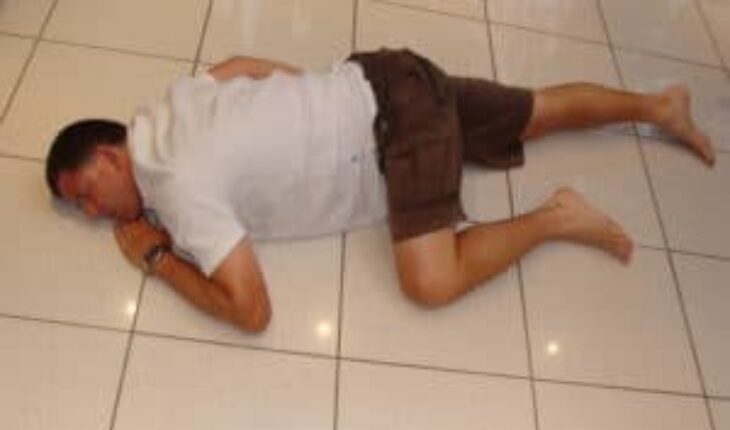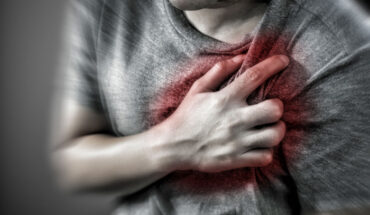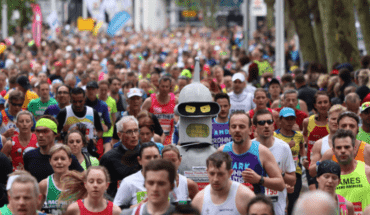When you are unconscious or unresponsive, most of your muscles relax and go floppy. Your tongue is a huge muscle attached to your bottom jaw and if you are unconscious and lying on your back, your tongue will flop back and block your airway and you won’t be able to breathe. In addition, your oesophagus (the tube from your throat to your stomach) and the sphincter (the valve) at the top of your stomach relaxes and remains open, so the contents of your stomach may trickle up and drip into your lungs. This is known as passive vomiting and is extremely dangerous to the casualty. This is why it is vitally important you ensure you protect the casualty’s airway.
How to open someone’s airway
Tilt the head and lift the chin. Try this yourself and you will find if your head is all the way back and you push your chin forward, consequently you are unable to swallow.
By tilting their head and lifting their chin you are lifting their tongue from the back of their throat. Never try and pull someone’s tongue or put your fingers down to clear their airway. This is dangerous and could cause serious harm.
Put one hand on their head and the other under their chin and tilt their head back, lifting their chin upwards. This will lift their tongue away from the back of their throat so that their airway clears.
Just after their heart ‘stops’, a casualty may appear to be breathing when they are not. These breaths are called “agonal gasps” and are a reflex action from the lungs. Agonal gasps are not effective breathing. If there are fewer than 2 breaths during a 10 second period, the person is not breathing sufficiently and you will need to start CPR.
Hold the airway open and look. Listen and feel to check they are breathing. You need at least 2 breaths in a 10 second period to be sure that they are breathing normally.
If they are not breathing commence CPR.
The Recovery Position:
If the casualty is unresponsive and breathing normally, put them in the recovery position. The recovery position is when someone is rolled onto their side allowing gravity to help their tongue flop forward and the contents of the stomach to drain out. This will keep the airway clear and allow the casualty to keep breathing.
The casualty should ideally not be on their front as this puts the weight of their body on their lungs. This makes it harder for them to breathe. Therefore, with an adult or child, the knee is bent up at 90º, in a running position, which helps to support them remaining on their side. If the person has collapsed on their front and you are worried about a spinal injury, if you are sure they are breathing and their airway is not compromised, leave them as they are.
Additionally, when you have ruled out a possible spinal injury, once on their side, tilt the head back slightly to further open the airway to allow saliva and vomit to drain freely.

For clear direction as to how to put an adult, child or baby into the recovery position please click here
- What is a seizure? - 13th March 2025
- Febrile Convulsions and Seizures in Children - 13th March 2025
- Why women are less likely to receive CPR or survive cardiac arrest - 6th March 2025







